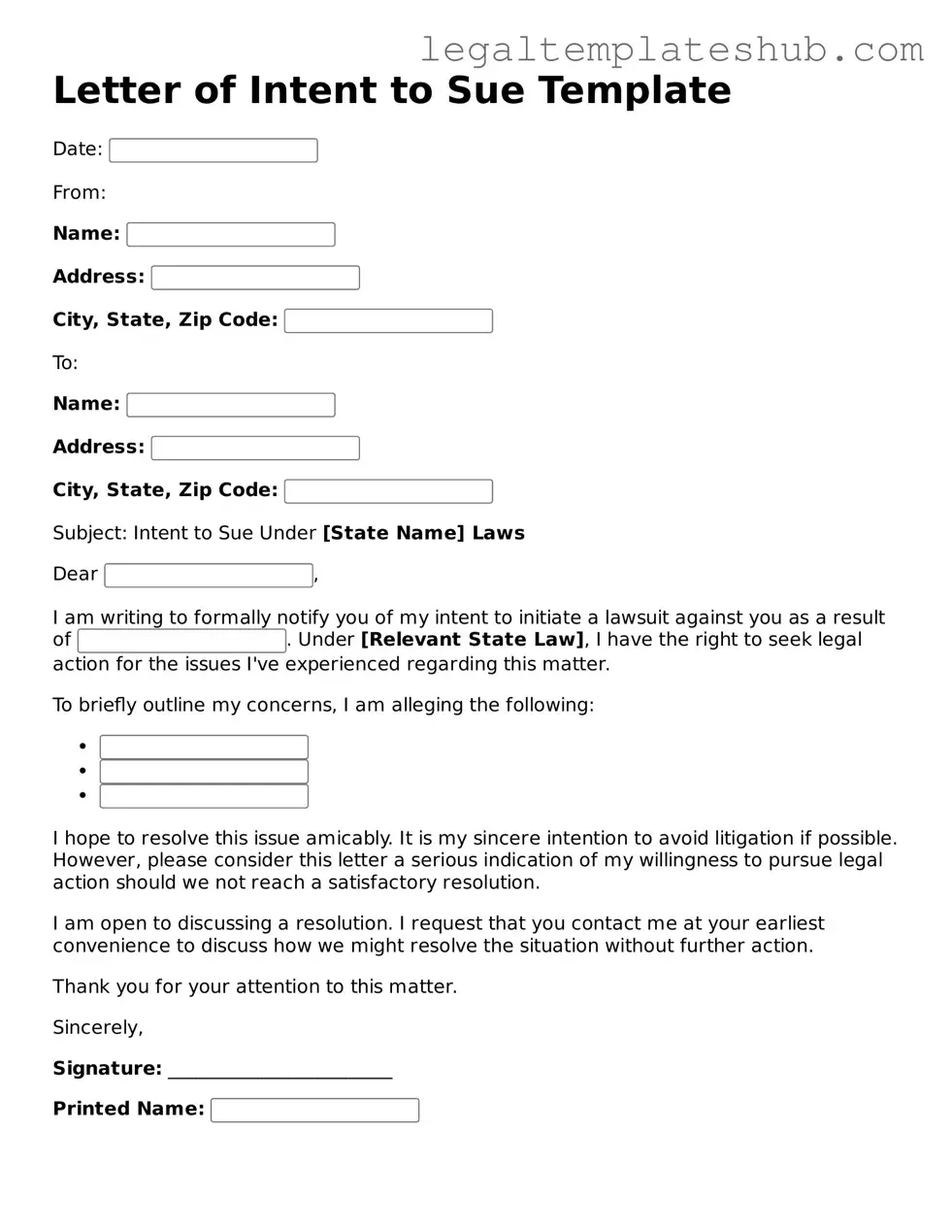Instructions on Filling in Letter of Intent to Sue
After you have decided to proceed with your legal matter, filling out the Letter of Intent to Sue form is an important next step. This form communicates your intention to take legal action and outlines the basic details of your situation. Follow these steps carefully to ensure that your form is completed correctly.
- Begin by entering your full name at the top of the form. Make sure to include any middle initials.
- Provide your current address, including the city, state, and zip code.
- Next, fill in your phone number and email address. This information is crucial for any follow-up communication.
- In the designated section, write the name of the person or entity you intend to sue. Be as specific as possible.
- Include the address of the person or entity you are suing. This helps ensure that legal documents reach them.
- Clearly describe the reason for your lawsuit. Be concise but thorough in outlining the key facts.
- Indicate any attempts you have made to resolve the issue before deciding to sue. This may include phone calls, emails, or other communications.
- Sign and date the form at the bottom. Your signature confirms that the information you provided is accurate to the best of your knowledge.
Once you have completed the form, make a copy for your records. You will then need to send the original to the intended recipient, ensuring that you follow any specific delivery instructions provided by your local court or legal guidelines. This step is crucial in moving forward with your legal process.
